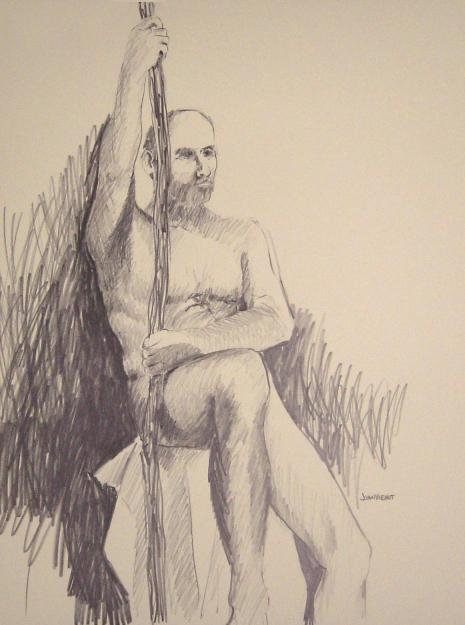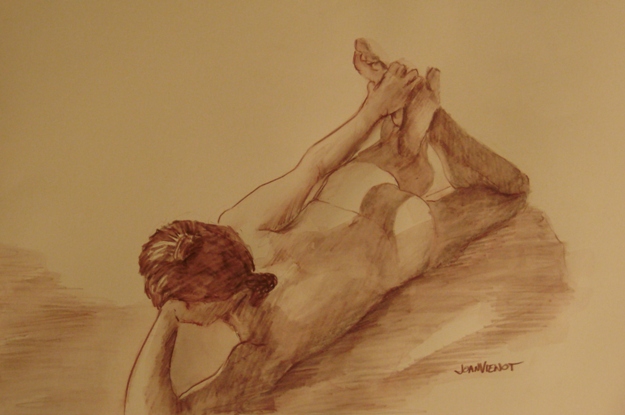
 Sometimes the art of drawing seems very out of place with our high-speed, instant-messaged, texted, digitized, and “shared” world. After all, since the invention of the camera, and then with the advances of the computer, drawing probably seems archaic to some.
Sometimes the art of drawing seems very out of place with our high-speed, instant-messaged, texted, digitized, and “shared” world. After all, since the invention of the camera, and then with the advances of the computer, drawing probably seems archaic to some.
So why do I draw? The primary reason I draw, is for the exhilaration of the capture of a form, a texture, a light pattern, or even a single line. It takes time, and time often stops in the process. The exhilaration can last from the beginning of the drawing to the very end, and then afterwards too, when I look at the work.
The day after the figure drawing session at Studio b. this week, I went to my first group meditation meeting, where again, time stopped. I found similarities in the two experiences, both bringing me solidly into the present moment, both resulting in a sort of euphoria, and having the effect of energizing me. There was a difference though, in that the drawing session as usual brought me peace with myself, a very powerful self, but group meditation brought me peace with everyone else in a powerful, unified oneness. Both resulted in incredible power.
There are other results from the experience of drawing. I find that I know so much more about something I have drawn, and I have a much richer experience of it. My memories of most experiences become foggy over time, but when I look at a drawing I made, even some from college days, snippets of details of my life or the experience come to mind that I would never recall otherwise.
I think it’s all about slowing down and intensely focusing. Except there is more to it than that, because slowing down and intensely focusing on a mathematics examination does not give me the same empowerment as drawing or painting. I guess that’s why we call it Art.
I have posted the final piece I made in figure drawing this week. I drew it with washable graphite on Stonehenge paper, with the intention of applying a loose wash over it to draw out some subtle tones, and instead I decided I wanted to keep the textures of the lines. But I may yet apply a wash. There is still plenty of opportunity to make a mess of it!












